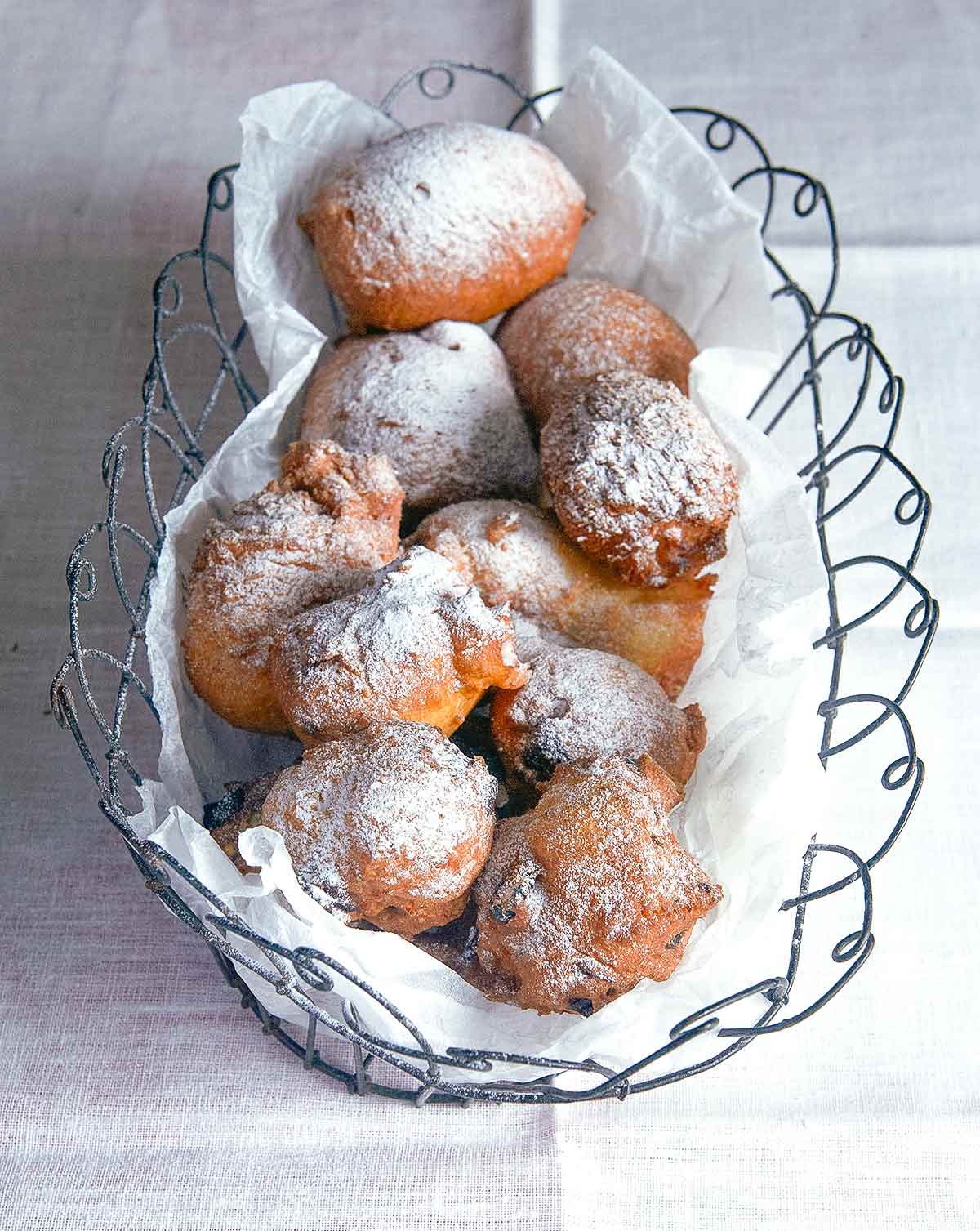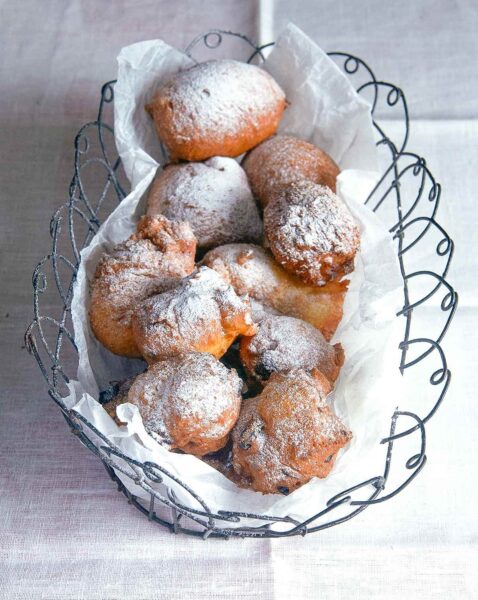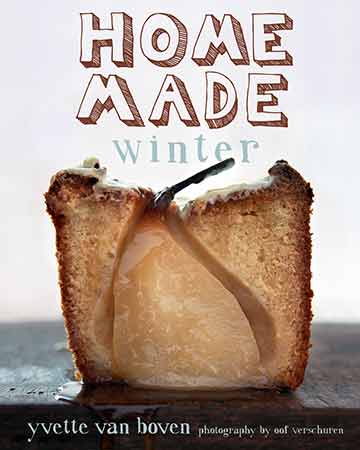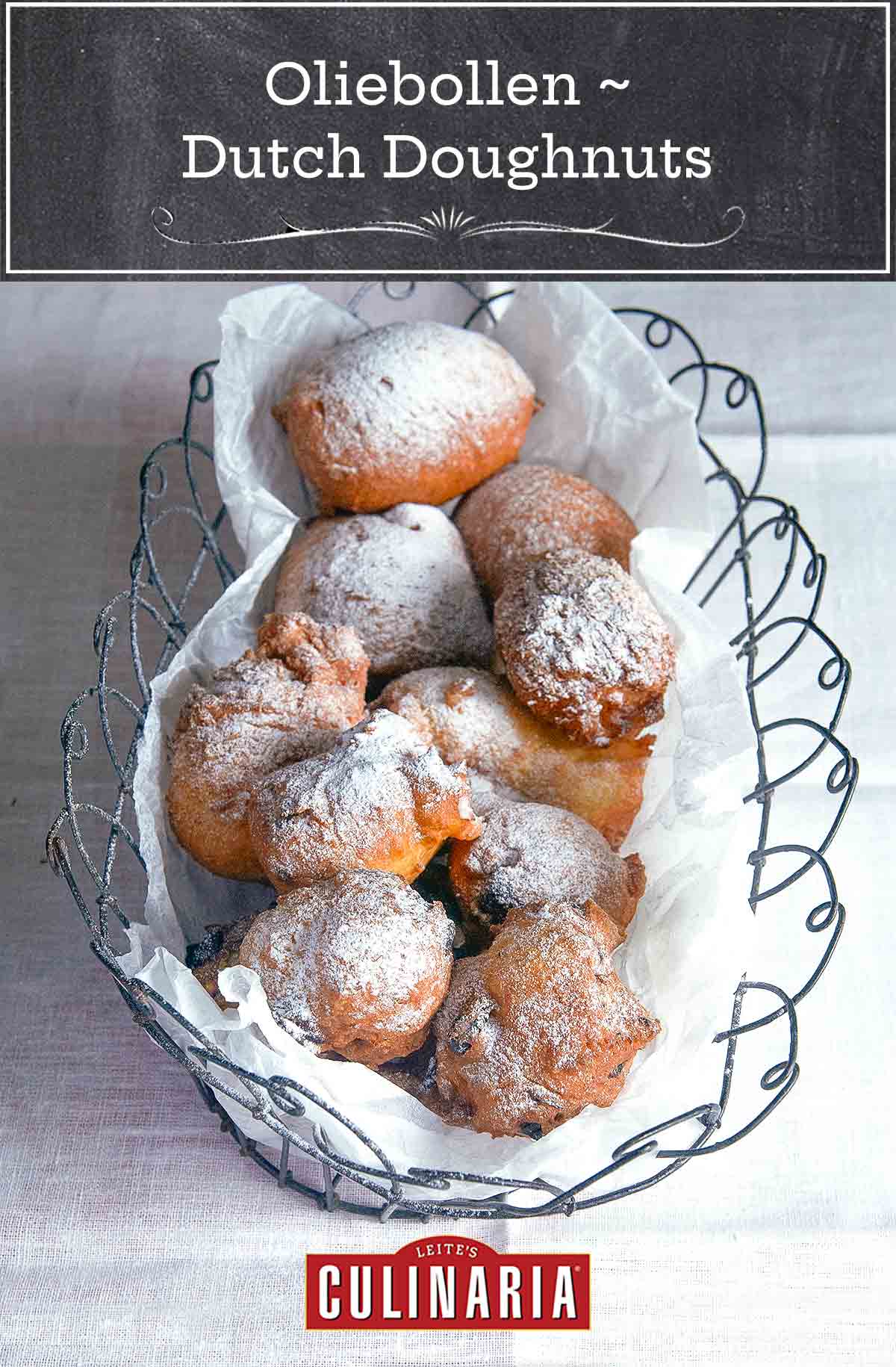
Want to Save This?
These traditional Dutch doughnuts are no ordinary pastries. Crisp on the outside with a cakelike interior that’s decidedly not too sweet, these orbs of deep-fried perfection are sorta reminiscent of beignets and are entirely deserving of a name that just sorta begs you to roll it around in your mouth. Just like the roly-poly pastries they describe.–Angie Zoobkoff
Oliebollen FAQs
Dan Krann, our community moderator with Dutch heritage, told us “a staple over the Yule season, especially over New Year’s, these deep-fried nuggets often have currants or raisins in them. That addition makes this sugar-dusted fritter even more magical during a season when imaginations and festivities run higher than the rest of the year. BTW, if you use apple chunks or rings instead of currants or raisins, you’ll get appelflappen. If you look at “Dutchies” in your local doughnut shop, you’ll see what is considered the modernized version of this treat.”
In order to get these little batter balls cooked all the way through without burning the outside, the oil needs to be 350℉. And remember that every time you add more batter, the temperature of the oil will drop. If you don’t have a thermometer, gently drop a small amount of batter into the hot oil. If it sizzles aggressively, the oil is hot enough.
The oliebollen need to be warm but give them a minute after coming out of that hot oil. Let them drain until dry—because hot oil and powdered sugar aren’t a good mix—then sprinkle liberally with sugar and pile up on a plate.

Oliebollen | Dutch Doughnuts
Ingredients
- 2 cups lukewarm milk, plus more as needed
- 1 envelope active dry yeast
- 3 tablespoons granulated sugar
- 4 cups all-purpose flour
- Pinch salt
- 1 large egg
- 2 quarts vegetable oil, for frying
- Confectioners’ sugar, for dusting
Instructions
- In a small bowl, combine the lukewarm milk with the yeast and sugar. Let stand for 10 minutes.
- Meanwhile, in a large bowl, sift the flour with salt. Make a well in the center and crack the egg into it. Add the yeast mixture and beat with an electric hand mixer, adding more milk if needed to make a thick batter the consistency of a cake batter. Cover the batter and set it aside in a warm place to rise for 1 to 2 hours.
- In a large sauté pan or deep-fry pan set over medium-high heat, warm the oil to 350°F (180°C). Using 2 oil-slicked teaspoons, make balls of batter no larger than 2 inches (5-cm) in diameter, sorta like a large golf ball, and let them slide into the hot oil. Depending on their size, you can fry 4 to 8 at a time. Cook until golden outside and cooked through inside, flipping halfway through cooking, about 6 minutes, depending on the size. Drain on paper towels.
- Serve warm, sprinkled with confectioners’ sugar.

Nutrition
Nutrition information is automatically calculated, so should only be used as an approximation.
Recipe Testers’ Reviews
I was excited to try this recipe because the oliebollen looked good and seemed easy to make. I’m very pleased to report they rated very high in both categories! The batter was super easy and quick to prepare. They were best to eat the first day but stored well in an airtight container. I heated the leftovers the next day in the oven at 400°F for about 15 minutes and froze the rest.
The only thing I would like to change is maybe adding a little more sugar in the batter for a bit more sweetness. I’ll make them again!
Somewhat reminiscent of beignets, but smaller, these oliebollen have a nice crisp exterior and a tender, cakelike interior. They’re slightly chewy in texture with just the right amount of sweetness from the icing sugar.
In Canada, our flour is a little different than in the United States. I needed close to half-cup of milk, or more, over what was initially asked for. The results are still great, though.
Although not called for in this recipe, currants or even raisins are routinely added. That size of batch is probably the right amount, because you’ll want to share! Also, once you have one…
The Dutch doughnuts I’m accustomed to, however, are usually one or two bites. Even using a couple of greased tablespoons yielded a size close to a regular doughnut. Using a couple of oiled teaspoons is probably the best method for getting the balls the right size for deep frying. The size of these will vary a lot, but I’d recommend trying to keep them 2-inches or less across the equator.
A note of caution. When eating olibollen, do not inhale while taking a bite. You risk inhaling the confectioners’ sugar, too, making an enjoyable experience a little complicated.












These remind me a lot of a South African dessert called koeksisters. Those buggers can be made savoury just as much as they can be made sweet. You can see the Dutch influence in South African cooking from that alone.
Both are a little rougher in shape and form than the more known American doughnuts or Berliners, but there is a charm to them.
Would these do well in an air fryer? Because that is the closest that I trust myself to use a deep fryer in any way.
Mikey, we haven’t tested the recipe with an air fryer so I’m not sure how successfully it would turn out. If any of our readers have tried making with an air fryer we would love to hear about it.
Very easy recipe and the results are delicious! Just what you need on a cold winter day in Northern Canada!
Thanks, Elinor! So glad you enjoyed them.
I have made oliebollen for years, but thought to try this. Excellent recipe; I added cinnamon, lots of raisins and apples. The batter made beautiful round oliebollen with a firm interior. Great taste!
Thanks, Els! Appreciate you taking the time to let us know.